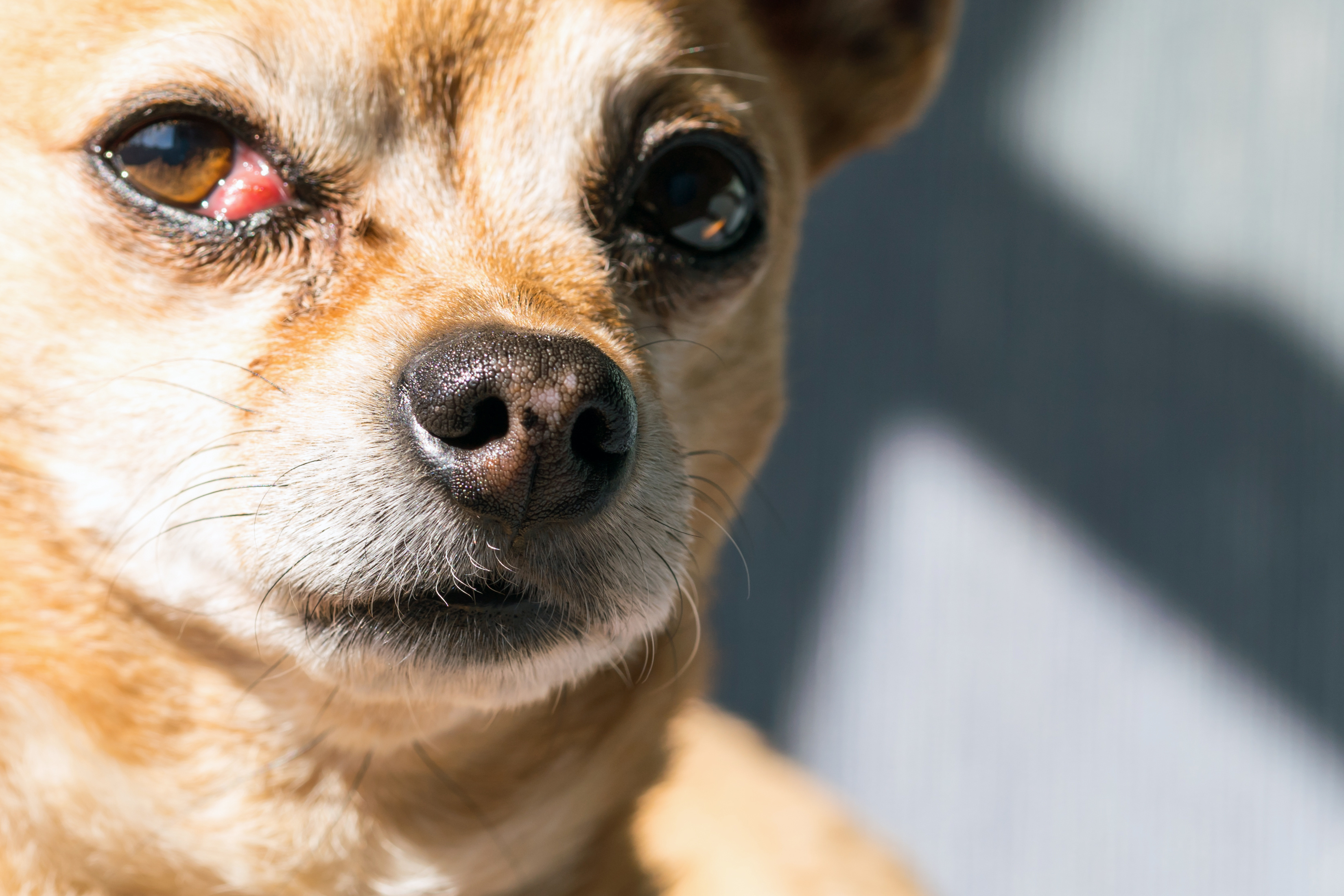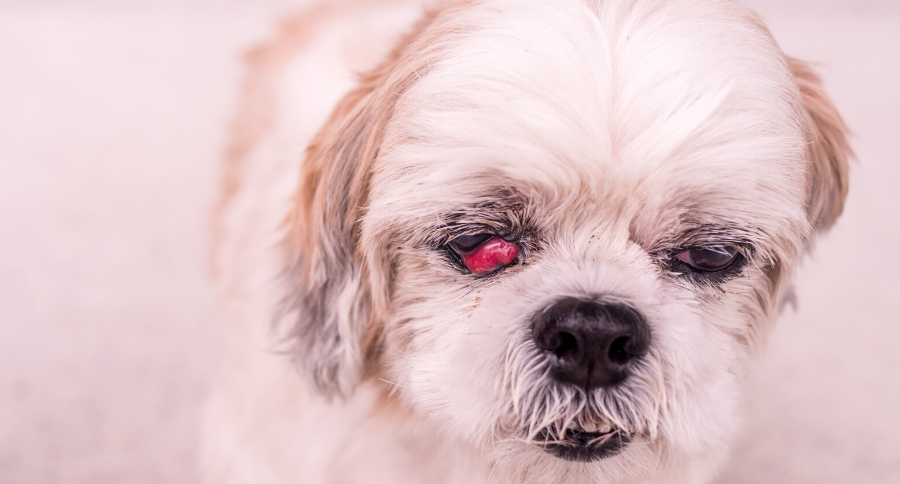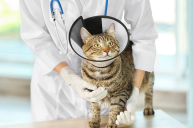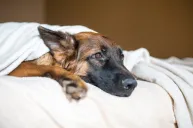Eyes really are the window to the soul! Our dog Shermie is a Basset Hound mix and before we brought him home from Oregon Humane Society he had cherry eye surgery. This didn't seem very painful when we met Shermie but it was evident something had to be done to correct this eyelid protrusion. If this isn't taken care of it will quickly become extremely painful (a lot of discomfort) for your dog.
We were madly in love with Shermie despite his eyelid condition but pet owners need to know about this in case it happens to their dog! This is an emergency and you should rush your dog to the vet with any eye condition.
What is 'cherry eye' in dogs?

"Cherry eye" is a common term for the prolapse of the third eyelid gland. Many mammals, including dogs, have a third eyelid located inside the lower eyelid, also referred to as the "nictitating membrane."
When this gland prolapses (or pops out) it looks absolutely awful!
VCA Hospitals help explain the signs so pet owners know what they're looking at if this happens to their dog.
"The prolapse of the third eyelid gland appears as a red swollen mass on the lower eyelid near the nose or muzzle (it takes its name from the resemblance to a cherry). The "cherry eye" may be large and cover a significant portion of the cornea, or it may be small and appear only periodically. Any sign of "cherry eye" should be brought to your veterinarian's attention immediately."
This condition is most commonly associated with a congenital weakness of the gland's attachment in the dog's eye. It may also be a condition that is inherited.
Some breeds are known to get this condition.
https://www.instagram.com/p/BwDGGfXgNKZ/
Our dog's breed was on the list so we weren't stunned when we learned about the condition. Other breeds most commonly affected are:
- Cocker spaniels
- Bulldogs
- Boston terriers,
- Beagles
- Bloodhounds
- Lhasa Apsos
- Shih Tzus
How is it diagnosed?
https://www.instagram.com/p/B4Ng8L6F0pN/
After you see this red mass and your dog is at the vet you'll get a diagnosis right away.
CertaPet shares that any vet should be able to quickly diagnose this condition.
"Any veterinarian can diagnose cherry eye disease, as it's one of the most frequently-occurring conditions in dogs, especially those that are young. However, a veterinary ophthalmologist will be able to best diagnose cherry eye and outline a course of treatment for it."
What's the treatment?
https://www.instagram.com/p/B3R65uTndrG/
Treatment involves a surgical replacement of the third eyelid gland. Adequate tear production is a major concern. VCA Hospitals also shares that it is important to treat the condition as soon as possible in order to minimize permanent damage to the eye or third eyelid gland.
Luckily our dog Shermie didn't develop cherry eye in his other eye and he didn't have any complications after we brought him home from the surgery. His gland returned to normal function after a few weeks and a lot of eye drops!
A lifetime of dry eyes is a major problem so if you see the corner of the eye inflamed and you suspect it's cherry eye you need to get your dog or cat to the vet immediately. Eye problems in animals can be very serious. The surgical procedure for cherry eye is typically what your vet will recommend and while other treatment options do exist they're not very popular and don't work most of the time. This condition can happen in young dogs or seniors so it impacts all ages.
Consider eye health one of the most important factors when you look at the overall health and wellness of your animal. Other conditions are corneal ulcers, conjunctiva, and keratoconjunctivitis sicca.
Do you know a dog that had cherry eye surgery? Please leave us a comment below!




